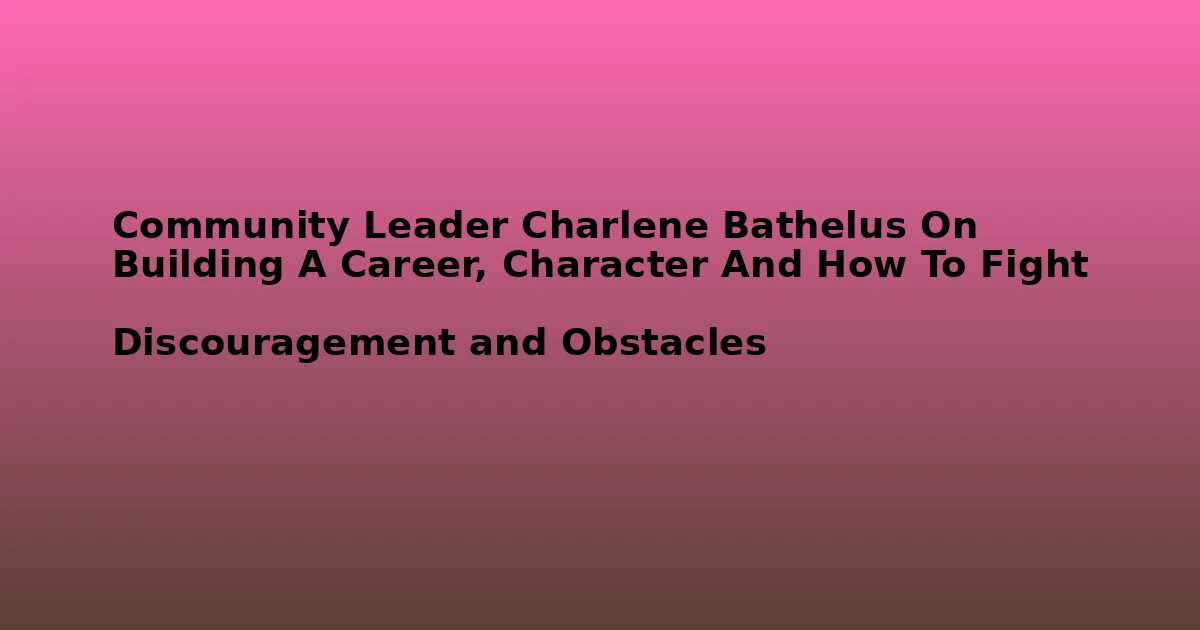Are you taken by love stories? This is a special love story. It’s between a man from Minnesota and the left portion of a little island known as Hispaniola. The man in question is Terry Curtis, a self-described adventurer, who was vacationing in the Dominican Republic in the early 2010s, when the earth shook in Haiti for a mere 45 seconds, and nearly destroyed 206 years of culture.
Upon his returning to the United States, Curtis was glued to news channels like CNN. Something told him that there was something more to the images he was seeing on his television screen. Long after Haiti had slipped from the international news media headlines, it was still front-and-center in Curtis’ mind. He wanted to live the true Haiti experience, and decided to go see it for himself.
Most people traveling to a country for the first time, and especially at a time when it’s considered a crisis area, would have tried to travel with a church group or a non-governmental organization, or to at least have a plan. Ever the intrepid adventurer, Curtis only had his flight reservation and a backpack, when he landed in Port-au-Prince.
Curtis was immediately infatuated, and then fell downright head over heels in love with Haiti, its people, the country’s cuisine, and the combined potential of all these factors.
His adventure-filled journey in Haiti has not been without trials and heartbreak, but has left him inspired, and mentally-bloated with life lessons that could only be learned on the ground in Haiti. It made sense to Curtis that he shouldn’t be alone in living the Haiti experience, and that other people outside of Haiti needed to discover the Haiti he had uncovered it. He founded Haiti Travel Adventures for that purpose. The company has a website, as well as a blog and a Twitter feed, in which Curtis shares stories about staying at local hotels, discovering Haitian dishes, and visiting historical sites.
When Haiti’s Tourism Ministry has campaigns, and when Haitians and Haitian-Americans laud the tourism merits of Haiti, potential tourists take heed. Curtis, however, has a different kind of credibility with the tourism market. He is a member of the very tourism market that Haiti is targeting.
His favorable tweets about Haiti tourism, his candid notes about life in Haiti, and his endless lauding of Haiti’s cuisine, has considerable credibility with those still reticent about choosing Haiti for their next vacation spot. Indeed, he has become a one-man, informal tourism ambassador of sort, fielding questions from his Haiti-curious followers and presenting the country in a positive light to them. He’s not patronizing, and he isn’t a sugar-coater either.
He just wants to rebrand Haiti’s image and change others’ perception of the island, and his Haiti tourism evangelizing has already landed Haiti some disciples. He wants them to fall in love with the island, the way he’s fallen in love with it.
What was your perception of Haiti, prior to going there?
I grew up in the 80’s and the only thing we saw in the media about Haiti were the boatloads of Haitians arriving in Miami, the aids crisis, the drug trafficking, the military coups and the riots. When I told people I was going to travel there they said I was crazy. And to be honest, I am a little crazy.
Haiti was not my first adventure travel for I had traveled in “dangerous” places before, such as, Nicaragua, Venezuela, Columbia, Mexico, and Honduras. But when I first arrived in Haiti, yes, I was a little intimidated. But once I began to hit the streets and meet the people that changed.
I found the Haitians to be very welcoming and they were happy I came to discover their country. So many people come to Haiti “help”, so many come to Haiti to “change” it, that when I traveled around Haitians were proud that I came just to visit and discover. It was as if they didn’t think they had anything to discover and they were happy to hear why I came.
They were proud. They embraced me and showed me their country, their food, their homes, their schools and their trades.
Tell us more about your company Haiti Travel Adventures.
In Haiti, I saw many missionary groups and Non-Government Organizations (NGOs) working to “change” Haiti. I didn’t want to change the Haitian people; I wanted to tell everyone the “real” story. That all is not bad here; there are some very good people and many good things to see and do.
There is this wonderful African influenced culture in the Caribbean just 90 minutes from the United States. I wanted to take that excitement that the Haitian people showed me when they learned I came to Haiti as a tourist and somehow tell everyone. I wanted to change the image most people have of Haiti and with that I created the website and began to show pictures and tell stories of my travels.
I engaged social media platforms and to my surprise people were interested. Through my Tweets and blogs, Haitian Americans—actually Haitians all over the world—were “taken” back home to places, food and a culture they missed. Others were intrigued about the adventure travel possibilities and some just had fun about this crazy blan traveling and learning a new culture.
From there people interested in travel began to call me and ask for advice. I have helped many as a resource and others have traveled with me into and around Haiti.
What are some changes you’ve seen since you started Haiti Travel Adventures?
In the last three years, a lot has changed in Haiti. Many new hotels have been built; the airport is remodeled and operates much better. Ground transportation companies have started, tour companies have emerged and the most exciting thing is many of these are Haitian owned businesses. There are many new restaurants and nightclubs along with better access to cultural events and historic places.
You often emphasize “The Real Haiti”. What’s the difference between the Haiti most think of and The Real Haiti?
I used the term “the Real Haiti” to challenge what people think. To challenge what people only knew from the media.
Even after the earthquake many NGO’s and the United States government began to market a negative image of Haiti for the sole purpose raising money. Many Haitians told me they don’t want our old t-shirts, imported foods and even money. Then just want jobs and an opportunity to make their country a place they can be proud of.
They wanted a “hand up, not a hand out”. For me, changing that image of Haiti meant giving business entrepreneurs ideas about Haiti. I wanted them to come visit and come up with ideas for businesses.
Because businesses meant jobs for the Haitians. Tourism was a business possibility, but I knew much had to be done before tourism could return to Haiti. Today we are slowly getting there.
I can see the light at the end of the tunnel. Tourism is happening in Haiti, but we still have a long way to go.
You have of Haiti on your blog. What’s the most memorable place you’ve visited there?
For me when I travel, the places that capture me are the ones in nature where you just stop and catch your breath and realize there is an awesome God in this Universe. The first place in Haiti that happened to me was in Port Salut on the beach and the second place was a top the Citadelle. These memorable places go down in my world travel journals as amazing places that I will never forget.
The Haiti Travel Guy visits the Citadelle in Cap Haitien.
Have you tried Haitian cuisine?
The one thing I learned about Haitians is they love to eat. The food in Haiti is all natural. When you shop in the markets you can find the freshest of fruits, vegetables, spices and meats.
You don’t have to eat the processed, preservative injected foods we are known for in the United States. The food here is natural and good for you: Haitian rice, coffee, peanuts, natural juices, fish, goat, chicken, beef and legumes. Some of my favorite Haitian food and drink is poulè and rice—Haitian rice—not the white rice the United States exports into Haiti; Kabrit, pòk, lanbi, oma, lalo, mayi moulin ak lèt, ji kowosòl, krevèt, manba, and of course, Prestige.
What tips would you like to give to those who wish to come to visit Haiti?
My advice to those who wish to travel to Haiti is the same advice I would give to anyone wishing to travel abroad. Travel light and stay flexible. Traveling is an adventure.
Make plans but remain flexible. Be open to learn new cultures and try new things. Traveling is homework for life.
Haiti’s rebranding is in progress. What do you think can be done to help tourism initiatives?
For tourism to return to Haiti like we used to know it, Haiti needs to continue to improve infrastructure. Roads, electricity and water. This, along with helpful police who can provide information and guidance to visitors, will ensure that people will consider Haiti just like they consider the Dominican Republic or any other vacation destination.
[Photos: Provided by subject]
Get on board with Terry Curtis and live through his Haiti travel adventures by visiting his and his .
Last Updated on December 4, 2025 by kreyolicious



